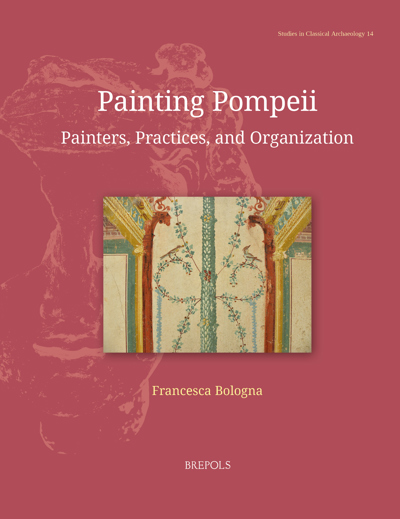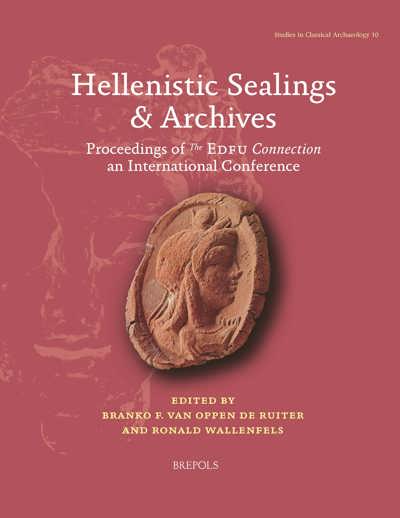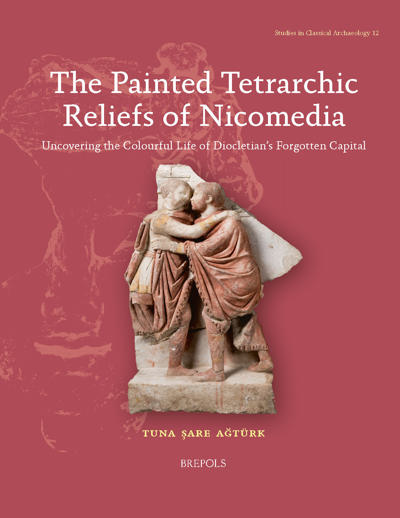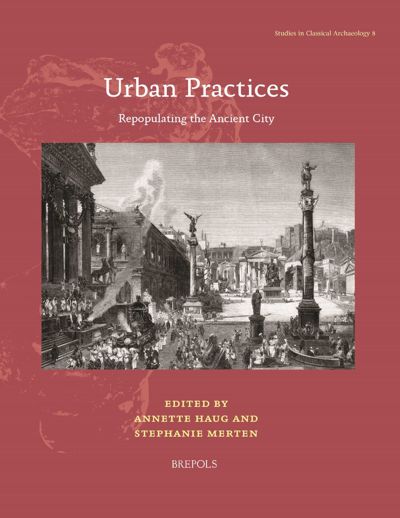
- Pages: xvi + 120 p.
- Size:216 x 280 mm
- Illustrations:20 b/w, 66 col., 8 tables b/w.
- Language(s):English
- Publication Year:2024
- € 85,00 EXCL. VAT RETAIL PRICE
- ISBN: 978-2-503-61119-8
- Paperback
- Available
This book looks beyond the bright colours and imaginative forms of Roman wall paintings, investigating the materials, gestures, and decisions involved in their making.
"Francesca Bologna’s excellent study of 240 Fourth Style Pompeian paintings offers new insights into their attribution and into the make-up of the teams of craftspeople that produced them. (...) The conclusions are of wider import to the social history of the city, especially in the period between the earthquake of 62 CE and the eruption of 79." (Federico Santangelo, in Greece & Rome, 72/2, 2025, p. 361-362)
"...Bologna admirably provides a new image of painting as an itinerant, precarious, and skilled craft. This volume will be of interest to anyone who is curious about ancient art and labour in general and Pompeiian wall painting in particular. Her ambitious core chapters (2 and 3) will provide reference and fodder for future scholars. Bologna’s study (...) opens many new lines of inquiry, showing how Pompeii continues to yield fertile ground for researchers seeking to learn more about a variety of people in the Roman world, across a wide swath of disciplinary training. More importantly, it shows how bridging the sub-fields within classical art history/archaeology allows further light to be shed upon some of the most taken for granted presences in the history of Roman art." (Jessica Plant, in Bryn Mawr Classical Review, December 2025)
"(...) researchers interested in the living conditions of craftsmen during the Roman Empire will certainly be interested in reading this book, as well as scholars of ancient wall painting." (Irene Bragantini, in Theoretical Roman Archaeology Journal, 8/1, 2025)
Francesca Bologna is a Research Fellow at the University of Verona. She completed her PhD at King’s College London, with a thesis focusing on Roman wall painters in Pompeii. She worked at the British Museum as Project Curator for the exhibition ‘Nero: the man behind the myth’ and taught Roman archaeology at King’s College and Royal Holloway. Her research focuses on ancient craft production, particularly its economics and workforce organisation.
In the Roman world, wall paintings were one of the most pervasive art forms, adorning buildings of all levels, from public spaces and elite houses to far more modest dwellings. Yet despite the very visual nature of their work, Roman painters have remained largely invisible to history. This book attempts to rectify this situation, by shifting the focus from the paintings themselves to the people who realized them, looking beyond the bright colours and imaginative forms to investigate the materials, production practices, and choices underpinning artistic decisions.
Taking Pompeii as its starting point, this volume reconstructs what it meant to paint for a living, and asks if it was actually possible to make a living as a painter in the Roman world. Wall paintings are investigated stylistically but also from an ethnological and economic point of view. Broader comparisons across time and space, combined with a quantitative analysis of the labour involved in making wall paintings, allow the author to assess this art form as an economically-embedded practice. Through this unique approach, the volume exposes the social and economic forces underlying craft production, and offers new insights into the lived experience of Roman artisans.
List of Illustrations
List of Abbreviations
Introduction and Book Structure
Chapter 1. Painters and Workshops: An Ongoing Debate
The Morellian Method
Individual Style and Attribution in Archaeology
Identifying Roman Wall Painters’ Hands
‘Workshop’: A Terminological Issue
Workforce Organization, Division of Labour, and Specialization
Identifying Specific Teams of Painters: Previous Approaches and Their Limits
Art and Its Makers in the Ancient World
Chapter 2. Pompeian Painters
Third Style Painters
Further Possible Attributions
Observations on Distribution and Dating: Workshops or Teams of Painters?
Fourth Style Painters
The ‘Vettii Workshop’
Patronage and Commissioning
Chapter 3. Making in Figures: The Energetics of Wall Painting
Wall Painting Technique
Labour Figures
The Casa dei Pittori al Lavoro (IX, 12, 9)
Materials: Plaster and Colours
Production Times: Plastering and Painting
Costs
Living Standards
Local Demand and Professional Choices
Free Labour or Slaves?
Chapter 4. Being a maker in the Classical World and Beyond
Quattrocento Florence and Other Comparative Models
Instability of Employment
Mobility
Versatility and Specialisation
Apprenticeship
Sketch-books and the Creation of Art
Chapter 5. Conclusions
Works Cited




